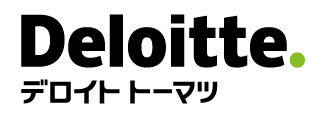SPI REPORT
III. Essentials of Advanced Media Panning
Now that we are well into the 21st century, the macro-environment has changed a lot due to both the prolonged stagnant Japanese economy and the advancements seen in the field of information technology (IT). Under this situation, one may ask, "does traditional media planning still work sufficiently?"
First, there is the increased complexity of ad media to consider. Ad spend for the four major media (i.e., TV, print and radio) still maintains the largest share by far at JPY3,582.2 billion (refer to chart #1 below). On the other hand, ad spend for Internet and Satellite TV, such as CS, are relatively low at JPY118.3 billion and JPY41.9 billion, respectively. But it is Internet ads that have recorded the largest growth rates recently, in addition to new media that has appeared in the market such as cellular phones. With more places/opportunities to broadcast ads, consumers have less time to be in contact with each ad, which means lower involvement. For example, let's consider TV. The current method used to calculate audience rates doesn't include video/HDD recordings. It's been about fifty years since TV ads started in Japan. And the media situation has changed a lot since the days popular TV program garnered 50.5% audience rating, such as "Hachiji Dayo! Zenin Shugo (It's eight o'clock! Let's get together, everybody)" by the Drifters.
What we should consider in addition to the appearance of new media is the change in consumers' attitudes towards ad media. For newspaper, there is a problem with a low purchase rate by younger generations. Many students feel they can get all the news they need from just the homepage of Yahoo's website. Up till now, people have gotten information from mass media, particularly newspapers and TV. But in the future, people will use these media for just getting the news roughly. For more detailed information, they'll use other media such as magazines, the Internet and CS/BS TV. In this situation, communicating ad messages to targeted consumers becomes more difficult. And, at the same time, selecting media that can communicate the messages properly needs to be even more carefully considered.
A second issue that needs to be considered is the increased flexibility of the media owners. Media companies have recently been accepting more special requests from advertisers/agencies. To some extent, this has been due to the prolonged economic downturn, but also because of the appearance of new media and the development of new innovation, technologies. For example, color ads for newspapers used to be very limited, but now have become common. In addition, non-standard sizes for print ads, such as a five-column ads and even-column ads, which used to be allowed only in sports newspapers, are now being accepted by major newspaper companies. Also, in the print media field, EDI (Electronic Data Interchange) has lead to progress in that we can save time by exchanging artwork in digital format with the printing companies. Other such technologies in the future will continue to change the situation dramatically.
The third issue to consider is that the relationship between advertisers and ad agencies in that it has changed a lot as well. It had been thought of as 'taboo' to discuss the commission rate (the agency's remuneration) paid to agencies as a handling charge for placing ads with the media on behalf of advertisers. However, the Japan Advertisers Association (JAA) conducted the first ever research covering a wide range of ad agency remuneration issue in 2002. Based on the results of the research, a book titled. "Remuneration Systems for Ad Agencies - A Step Towards Fairness" was released in June 2003 as a guide to remuneration systems for ad agencies. After this, the situation changed in that advertisers, ad agencies and also the media can discuss remuneration systems.
But even before this, Carat, the largest media agency in Europe, launched a joint venture company Chuo Senko, a mid-level ad agency in Japan. The new company started offering a special service covering just ad media planning and media buying for the first time in Japan. Their openly stated commission rate of just 5% is relatively low as they don't offer any creative services. It should be noted that a company announcing upfront a low commission rate as their selling point was a first in the Japan market. Until then, there were some agencies that tried to get more business by reducing their commission rate. But they could not be open about it because they didn't want ot create the feeling of unfairness among their existing clients. But there is now a new media agency, Hakuhodo DY Media Partners, which was formed as the integration of three major three agencies (Hakuhodo, Daiko and Yomiko) to provide media buying as their core service in December 2003.
As things keep changing like this, the structure will reform dramatically in Japan from the current one consisting of just the media companies, advertisers and ad agencies. But the existence of media specialist agencies is not unique only in Japan. These types of companies have been significant players in Europe and the US for years. According to Y2000 data, not advertising agencies, but media specialist agencies bought 83% of all the advertising in the UK. The percentage in France was 75% and 60% in Germany (refer to chart #2 below). In Europe, independent media specialist agencies, which are separate from any ad agency, buy much of the ad media. Therefore, the rates are very high. The largest media agency in Europe is the above mentioned, independent media agency, Carat.
| Ad expenditure (JPY100MM) | Comparison ratios(%) | Component ratios(%) | |||||||
|---|---|---|---|---|---|---|---|---|---|
| 2001 | 2002 | 2003 | 2002 | 2003 | 2001 | 2002 | 2003 | ||
| Total ad expenditure | 60,580 | 57,032 | 56,841 | 94.1 | 99.7 | 100.0 | 100.0 | 100.0 | |
| 4 major media | 38,886 | 35,946 | 35,822 | 92.4 | 99.7 | 64.2 | 63.0 | 63.1 | |
| Newspaper | 12,027 | 10,707 | 10,500 | 89.0 | 98.1 | 19.9 | 18.8 | 18.5 | |
| Magazine | 4,180 | 4,051 | 4,035 | 96.9 | 99.6 | 6.9 | 7.1 | 7.1 | |
| Radio | 1,998 | 1,837 | 1,807 | 91.9 | 98.4 | 3.3 | 3.2 | 3.2 | |
| TV | 20,681 | 19,351 | 19,480 | 93.6 | 100.7 | 34.0 | 33.9 | 34.3 | |
| Sales promotion | 20,488 | 19,816 | 19,417 | 96.7 | 98.0 | 33.8 | 34.8 | 34.1 | |
| Satellite media-related | 471 | 425 | 419 | 90.2 | 98.6 | 0.8 | 0.7 | 0.7 | |
| Internet | 735 | 845 | 1,183 | 115.0 | 140.0 | 1.2 | 1.5 | 2.1 | |
| unit:% | Japan | US | UK | France | Germany | Holland | Finland | Canada |
|---|---|---|---|---|---|---|---|---|
| Full service | 98 | 83 | 14 | 13 | 32 | 42 | 18 | 51 |
| Media specialist | 4 | 8 | 83 | 75 | 60 | 58 | 68 | 49 |
| Other | 0 | 9 | 2 | 13 | 9 | 0 | 14 | 0 |
Please contact us with questions or for more detailed information.
spiindex@spi-consultants.net
Notice
- This report and its contents are NOT officially guaranteed by SPI, though SPI may deem it worthy according to reliable information, resources & methodology.
- This information is confidential and belongs to the copyright of SPI. Any reference to this information is to include ‘according to SPI’

